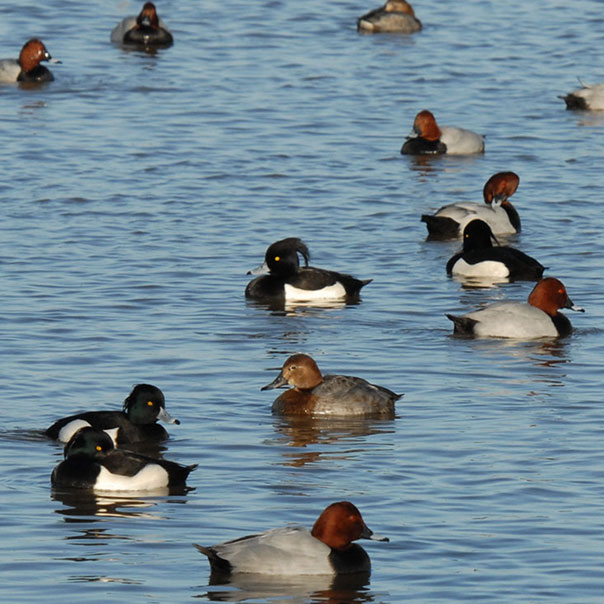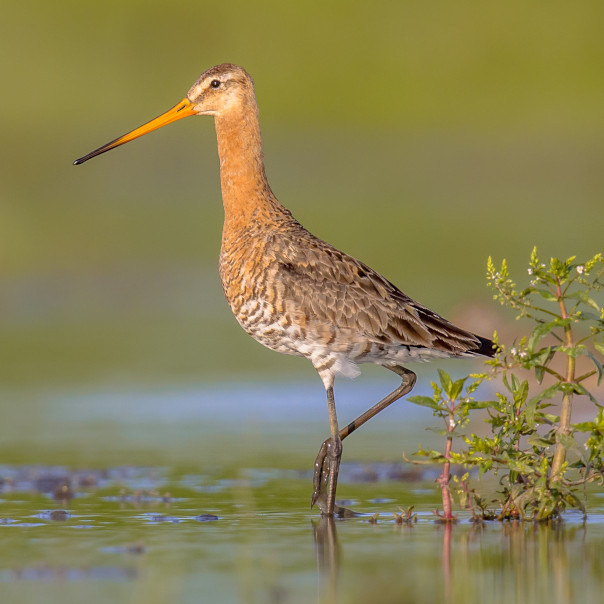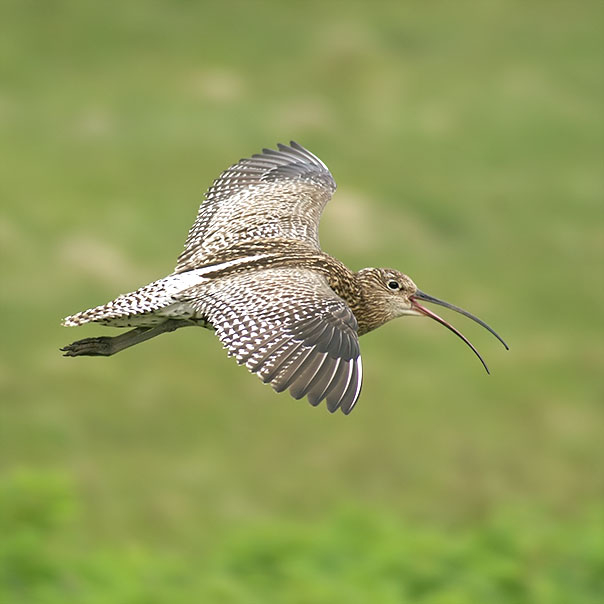Wading birds found in UK wetlands
Although they might initially appear to be a group of modest-looking, speckled birds, waders are full of subtle beauty, clever adaptations and their own unique quirks.
The group commonly known as ‘waders’ in the UK (or shorebirds in the US) are typically long-legged and long-billed, often seen half-submerged at shorelines, river mouths and estuaries. ‘Wader’ is a useful word as it captures a whole host of different species that exhibit this type of behaviour.
Superficially, groups like rails, storks and herons might appear to be associated with this category, but those groups are big and diverse enough to be considered in their own right.
What do wading birds eat, and how are they adapted?
Usually aquatic organisms make up a large part of a wading bird’s diet, from worms hiding in the mud to molluscs and crustaceans hiding under rocks. All wading birds possess long legs that enable them to stay clear of the water while they look for food.
What waders eat and how they do it is often one of the more fascinating things about each species - and the clue is in the beak. Most waders are specially adapted to finding a certain prey species just under the surface of a wetland. Waders with longer bills like curlew and snipe use them like chopsticks to pick out worms deeper in the mud, whilst the shorter-beaked lapwings use theirs to catch aquatic insects just under or on the surface.
Wading bird species you might see in wetlands
Identifying waders can be challenging, as many of them vary their plumage with the seasons and are superficially similar to one another in both appearance and name. This guide will take you through some of the waders you might come across and some of their more noticeable characteristics - which should help you tell them apart.
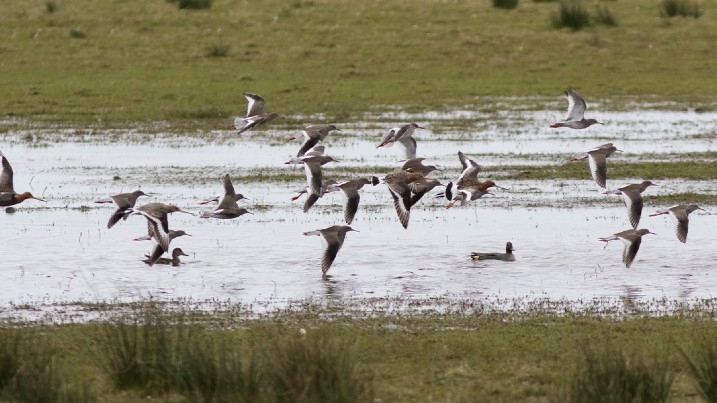
Sandpipers and shanks
The sandpipers you’re most likely to find are the green and common, with the wood and curlew sandpipers being more rarely seen.
Green sandpiper
(Tringa ochropus)
With a straight bill and yellowish-green legs, there is a sharp contrast between finely speckled upperparts and lowerparts. They prefer the water’s edges rather than open mud.
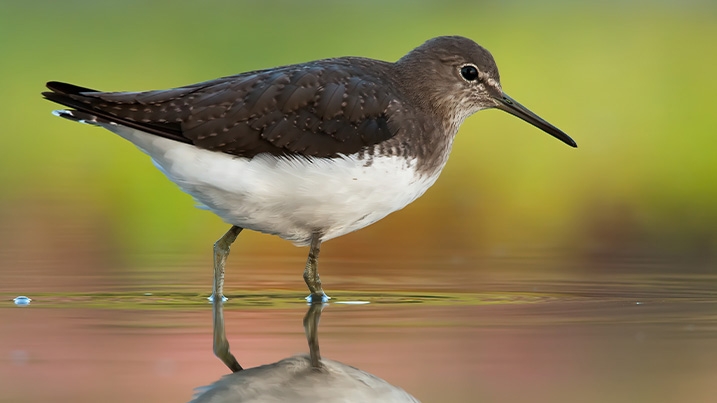
Common sandpiper
(Actitis hypoleucos)
Dappled brown on the upper parts with a distinct white shoulder patch, common sandpipers are known for their constant tail bobbing. These birds also have a distinctive flight - look out for stiff, curved wing position.
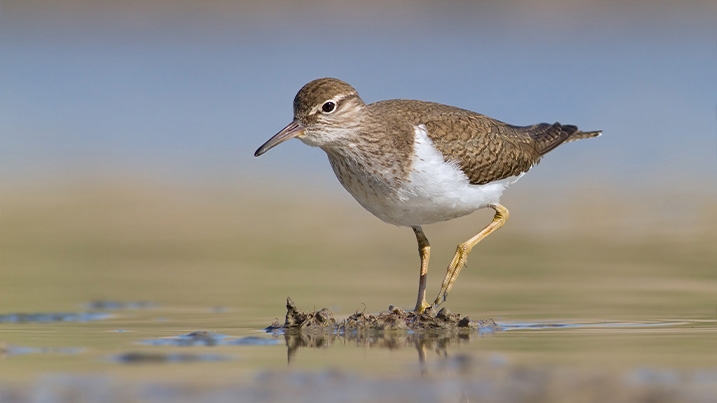
Curlew sandpiper
(Calidris ferruginea)
A passage migrant, most usually seen in small numbers during August and September, on migration from Russian arctic breeding grounds to Africa. Looks similar to a dunlin but with a longer, more down-turned bill.
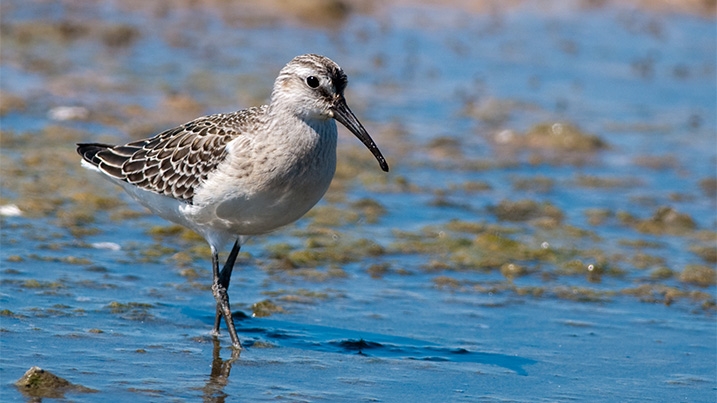
Wood sandpiper
(Tringa glareola)
An uncommon passage migrant in both spring and autumn, most often seen in August to September before wintering in Africa. Look for a tall and dainty structure, brownish colouring with large white flecks in the plumage.
You might also spot a purple sandpiper, but these are very scarce visitors to wetlands. If you can see a purple sandpiper up close in spring, you might notice a beautiful purple sheen to its feathers. They are more of a coastal bird, most often seen on rocky outcrops throughout the winter around UK coastline.
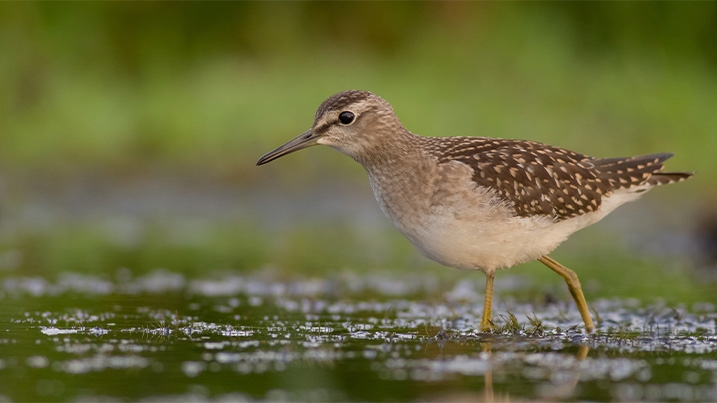
Turnstone
(Arenaria interpres)
Largely a wader of UK coastlines, they are found on estuaries and some inland waters, especially whilst on migration. Some can be quite bold and allow for close viewing, but when in flight you’ll notice their bold black and white patterning.
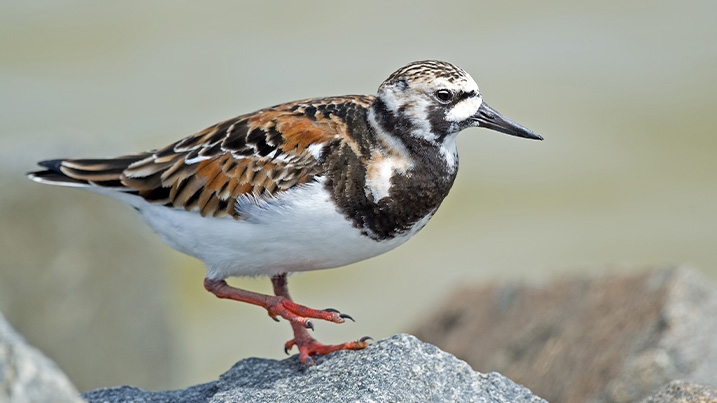
Knot
(Calidris canutus)
Knots arrive in the UK in autumn from their Arctic breeding grounds. This small grey and white wader is a spectacular sight to see when flying around in large flocks.
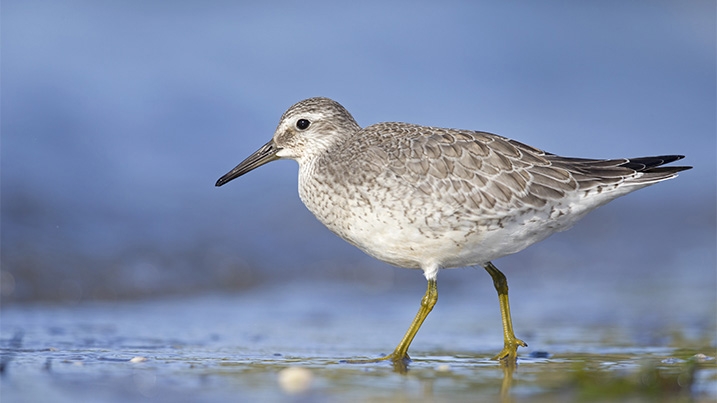
Sanderling
(Calidris alba)
The clue is in the name… this winter visitor and occasional passage migrant can usually be seen on shoreline habitats, often running at great speed along the edge of the breaking waves, looking for food. In winter, plumage is grey and white.
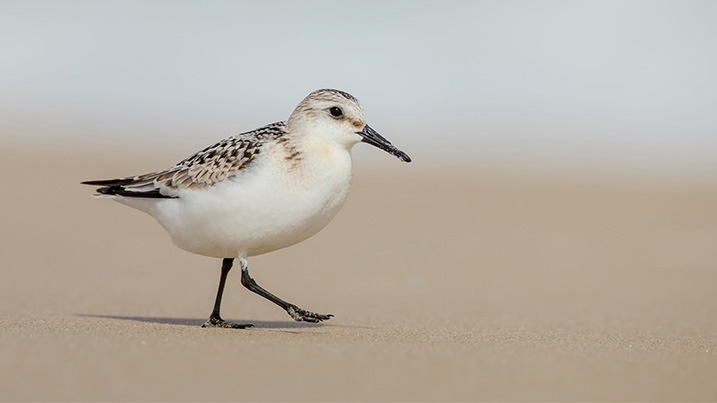
Dunlin
(Calidris alpina)
The most commonly-seen small wader, dunlin are an excellent yardstick to use when trying to identify rarer waders. Grey in winter plumage but browner with a dark belly either side of the breeding season, they have a markedly down-curved bill.
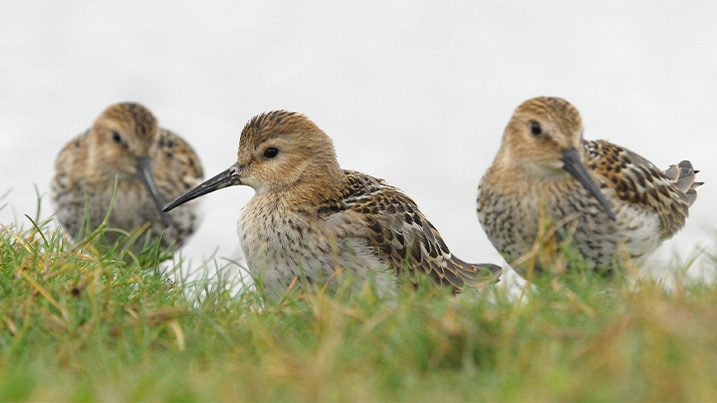
Little stint
(Calidris minuta)
This tiny wader looks like a small, short-billed dunlin. It’s a passage migrant but autumn is a good time to spot juvenile birds, with their constant and frantic feeding movements.
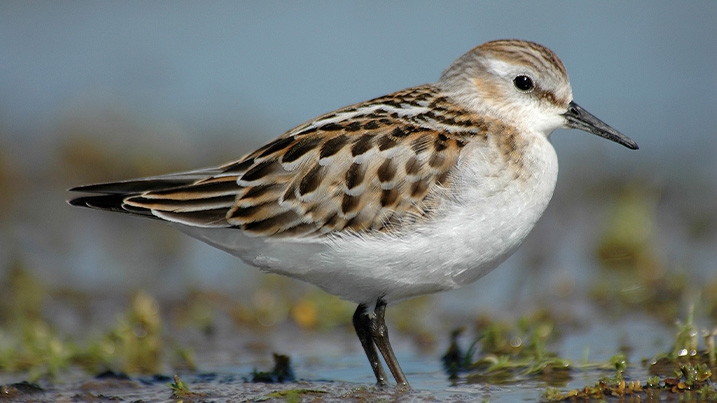
Redshank
(Tringa totanus)
Redshanks have long red legs, red-based bills and white wing bars. They are nervous birds and utter loud, pipping alarm calls which can often be heard across wetlands.
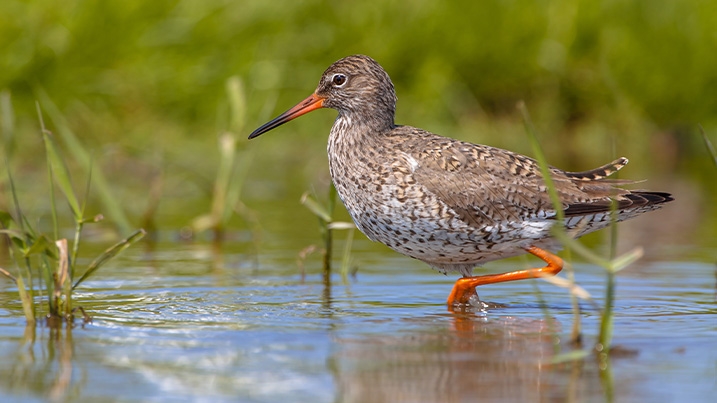
Spotted redshank
(Tringa erythropus)
The spotted redshank is larger than the common redshank, with longer legs and bill, without white wing bars. It calls ‘chew-it, chew-it!’ and can mainly be seen on passage in autumn but sometimes overwinters.
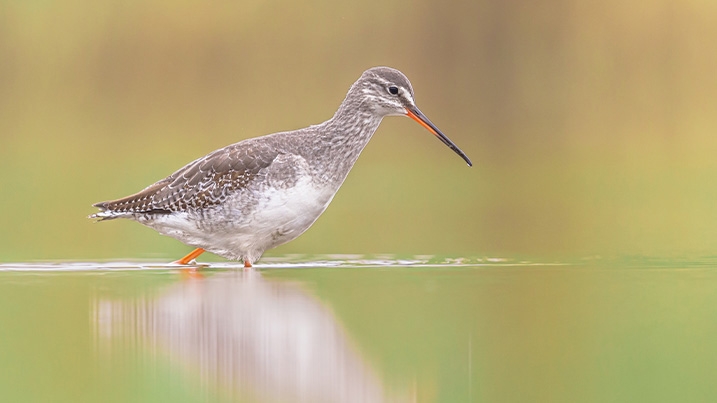
Greenshank
(Tringa nebularia)
An elegant, long-legged wader, that can look white from a distance. They’re mostly seen in spring and autumn, but its not unusual for them to over-winter. Look for yellowish green legs and a long, slightly upturned bill. Flight call is ‘chew-chew-chew’.
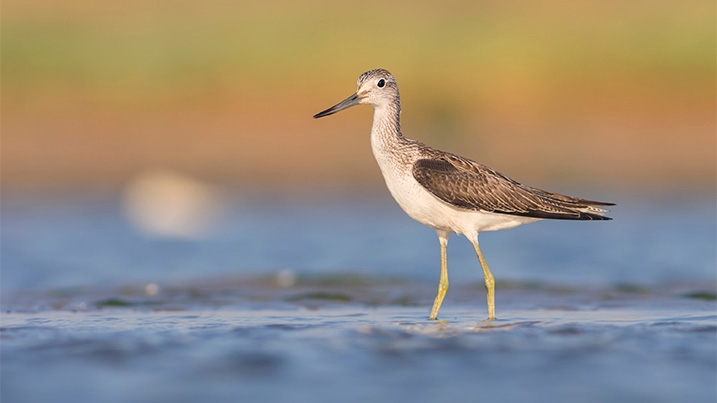
Ruff
(Calidris pugnax)
One of the tougher waders to identify, not helped by the males being markedly larger than the females. Look for a small head and sharp-pointed beak. On breeding grounds, males develop a black, white or chestnut ‘ruff’ around their necks.
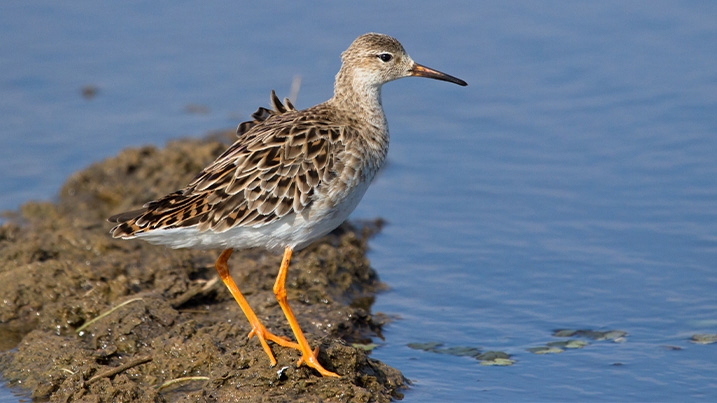
Snipe
The snipe and jack snipe look superficially similar but once studied closely, the subtle differences in detail start to stand out.
Common snipe
(Gallinago gallinago)
The common snipe has a long, straight bill and rounded body. The way it feeds is very recognisable, moving with a ‘sewing machine’ type movement as it probes marshy ground. In the breeding season, it performs a ‘drumming’ display and creates a humming sound by vibrating its tail feathers.
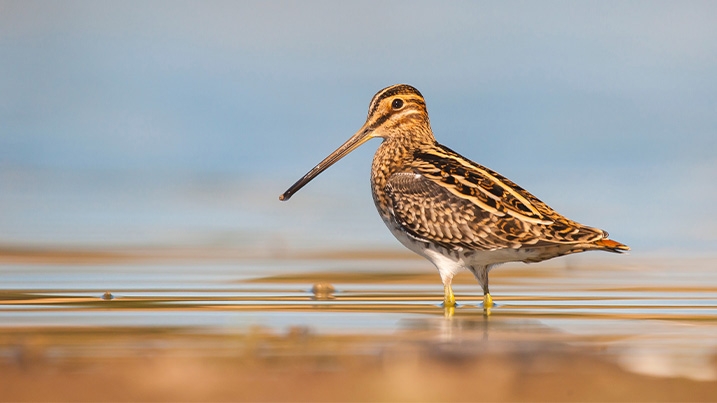
Jack snipe
(Lymnocryptes minimus)
The jack snipe is altogether smaller and can only be seen in the winter months. It is difficult to observe, preferring to crouch motionless to avoid danger rather than fly. It pumps its body up and down as it walks.
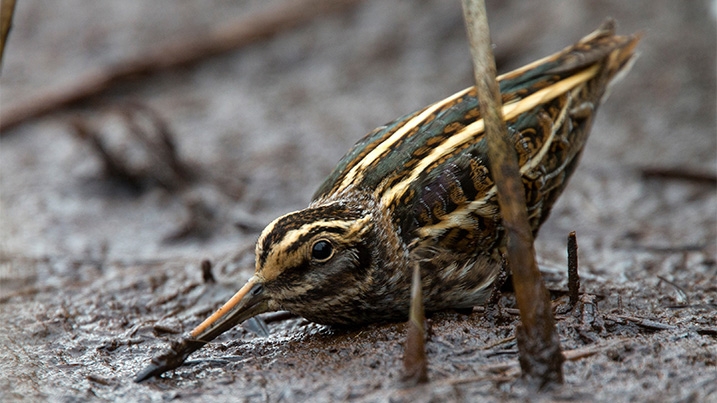
Plovers
The plovers aren’t all one family group, but they are some of the most beautiful waders you’re most likely to see in wetlands.
Little ringed plover
(Charadrius dubius)
This tiny plover has successfully colonised inland man-made wetlands, such as gravel pits, and can be further identified from the larger ringed plover by its golden eye ring. They arrive in early spring and leave on migration in autumn, back to Africa.
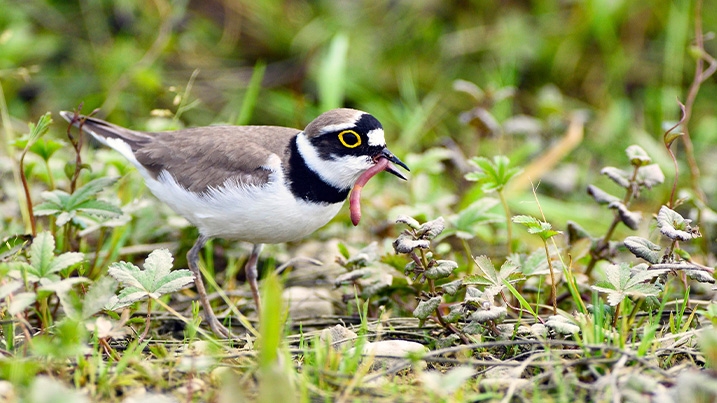
Ringed plover
(Charadrius hiaticula)
Larger and more round-bodied than the little ringed, this wader is found along coastal wetlands all year round. It runs along beaches and mudflats like clockwork before stopping dead to feed.
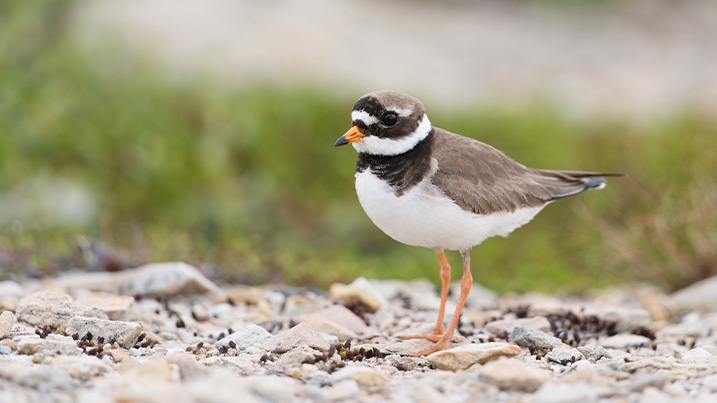
Golden plover
(Pluvialis apricaria)
Large flocks of these intricately patterned birds can put on a beautiful display as they fly in close formation, their sparkling wingbeats catching the sun and their haunting, flutey calls floating on the air.
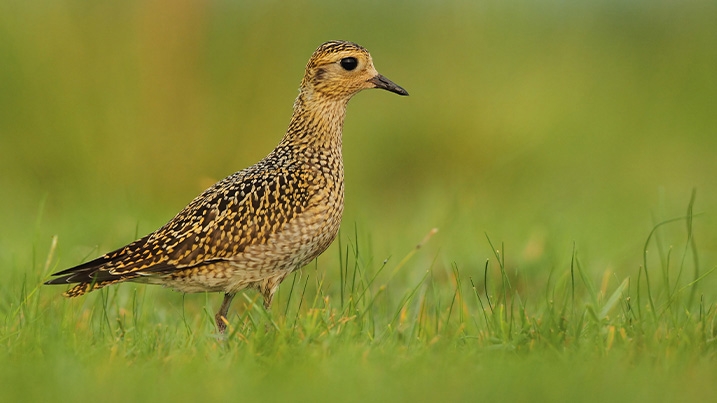
Grey plover
(Pluvialis squatarola)
Found on UK coasts and estuaries, they resemble golden plovers but are larger with a bulkier body and grey plumage. They are less often seen in large flocks.
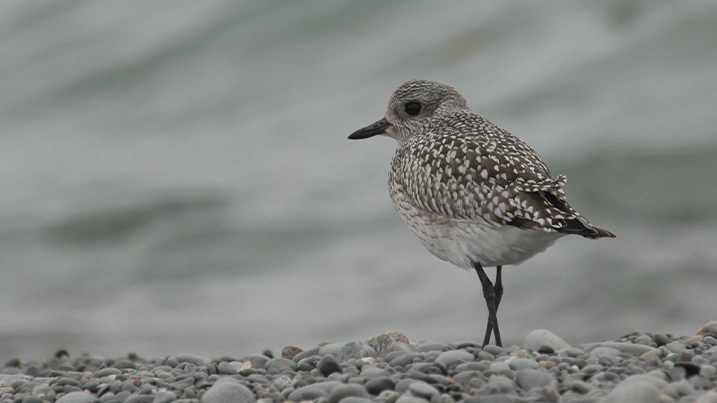
Lapwing
(Vanellus vanellus)
These beautifully iridescent, crested plovers used to be numerous in Britain and Ireland but are now declining, due to changes in farming and loss of habitat. Their distinctive ‘pee-wit’ call can be heard as they fly in slow flapping motions over wetlands.
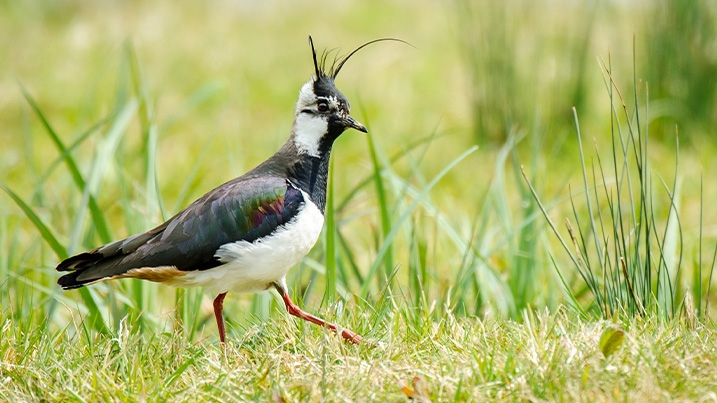
Godwits and curlews
The below birds can be a little confusing with their larger body size, long bills and streaky plumages.
Black-tailed godwit
(Limosa limosa)
They have a long, straight bill with pinkish base, white wingbars in flight and black tail. The majority of birds we see in the UK are Icelandic breeders, with the Continental race that breed here in small numbers being much rarer, favouring flooded meadows for breeding. More on our godwit work
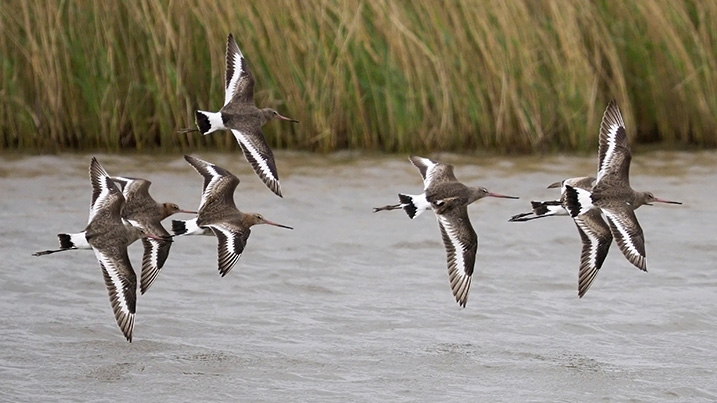
Bar-tailed godwit
(Limosa lapponica)
The bar-tailed godwit has a slightly squatter appearance than the black-tailed godwit, with speckled plumage, striped horizontal bars along the tail in flight and a slightly upturned bill. They winter on estuaries and coastal marshlands in the UK.
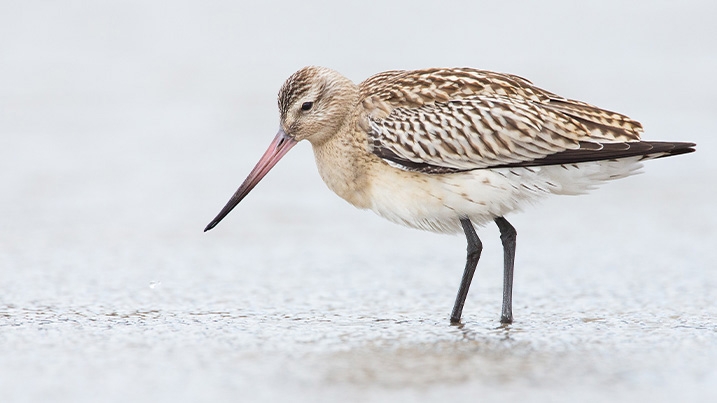
Curlew
(Numenius arquata)
This long-legged wader has a long, down-curved bill, mottled brown plumage and long, bluish legs. Their bubbling song is disappearing from former breeding grounds and they’re a serious conservation priority in the UK. More on our curlew work
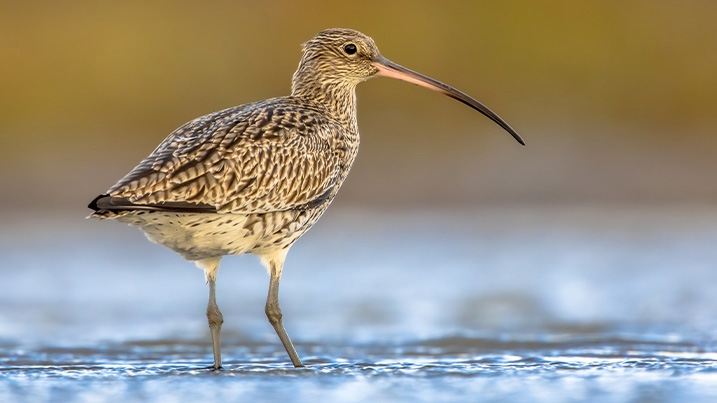
Whimbrel
(Numenius phaeopus)
Whimbrels look like smaller curlews, with a stripy head pattern and shorter, straighter bill. Through most of the UK, they are seen passing on migration, using coasts and estuaries to stopover and refuel.
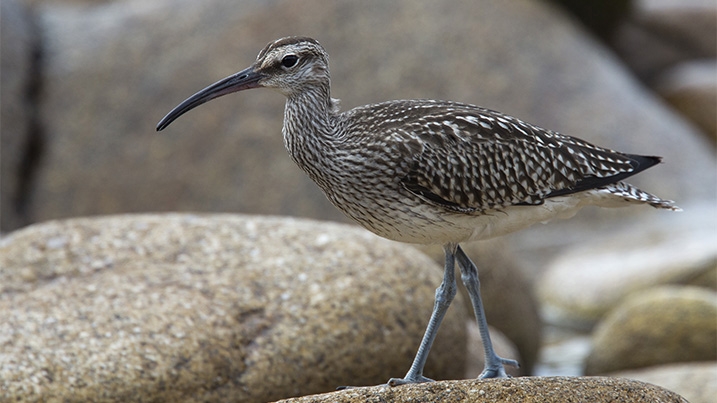
Black and white with a long bill…
These three species technically aren’t the closest of relations, but their plumage and body shape is superficially similar, so we’ve grouped them together.
Oystercatcher
(Haematopus ostralegus)
The black and white plumage, bright red beak and eye of this wader make it easily identifiable. In the breeding season they can have very noisy display flights and in the winter is usually seen on estuaries in large flocks, searching for the eponymous oysters. They have distinctive bars on the wings when flying, and in winter have white collars.
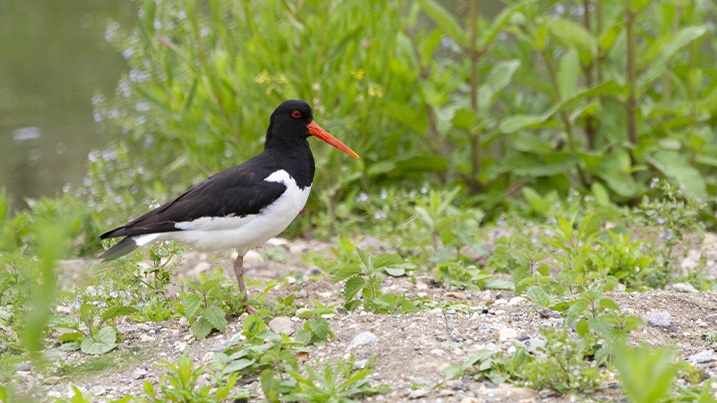
Avocet
(Recurvirostra avosetta)
The avocet’s black and white plumage and upwardly curved beak is unmistakable, adapted to help it swish side to side through the water to find food. They’re primarily a southern species and the breeding range is expanding. In winter, they migrate south to escape the cold to estuaries and coasts.
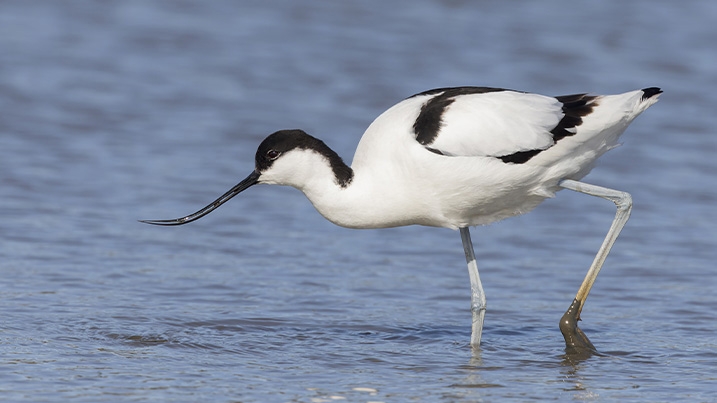
Black-winged stilt
(Himantopus himantopus)
These elegant waders regularly breed on the near-continent but we’ve included them here as, with our warming climate, they have started to make a more frequent appearance on our shores, with a breeding attempt occurring most years.
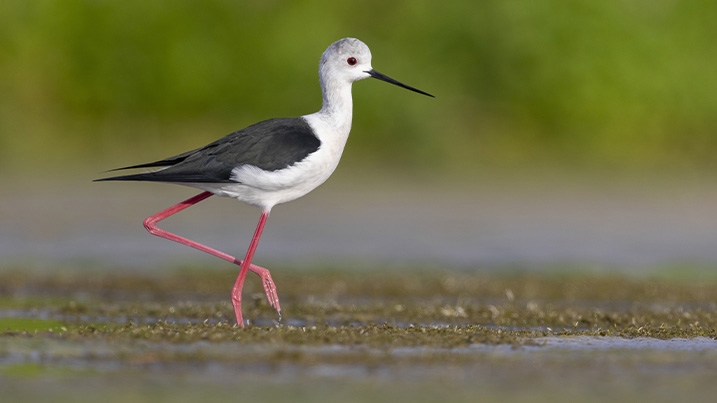
Threats to wading birds
In the UK, waders are affected by both climate change and human changes to their environments.
A warming climate can often mean unpredictable water levels during the breeding season, with too little water meaning predators can easily access nests, and too much water meaning nests are flooded out. More widely, rising sea levels are already increasing the severity of storms, flooding and the loss of intertidal habitats.
Unfortunately, the pressure on farmers to increase the yield of their land has led to less available habitat for these birds, and at worst the unwitting destruction of nests and chicks. And the increase in generalist predators across the UK’s simplified ecosystems has meant that the productivity of ground-nesting waders simply can’t keep up with the mortality rate.
How WWT are helping
WWT are focusing conservation efforts on helping the breeding curlew and godwit populations, which we hope will result in much needed insight that can be used to help protect other wetland species and their environments. We’re also creating networks of bigger, better connected healthy wetlands to bring habitat back to the landscape, so that wading birds can flourish. If you're keen to spot some of these species, WWT wetlands sites are a great place to start.
Find your nearest WWT site